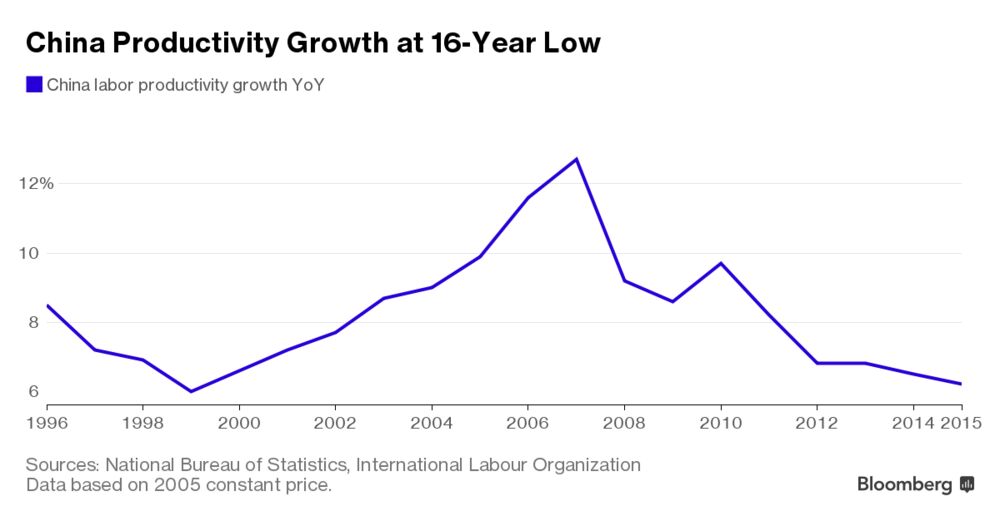China's Productivity Growth is the Worst Since the Asia Crisis
Bloomberg NewsAre Fiscal Policy Measures Working?
Government employees playing badminton in a Tianjin office lobby in the middle of the afternoon. Hundreds of miles away in the northern city of Tieling, workers manually cut rubber truck parts in a tiny family workshop that makes about $600 a month.
They're different examples of the same inefficiency hampering China's rebalancing toward a consumption-led economy and weighing on income growth. Labor productivity growth is the slowest since 1999, when factory orders evaporated in the aftermath of the Asian financial crisis and state-owned enterprises cut millions of jobs.
Squeezing more from the 775 million workers in China's assembly lines, construction sites and office cubicles is crucial to avoiding what the World Bank calls the middle-income trap. Rapid income gains powering the transition from smokestack industries to services and consumption will inevitably slow if productivity gains keep weakening, according to Raymond Yeung, chief greater China economist at Australia & New Zealand Banking Group Ltd. in Hong Kong.
"The decline serves as a warning sign for China’s long-term economic health," Yeung said. "As labor productivity is falling, wage growth is expected to be ambling down, hindering the nation’s push for transforming into a consumption-led economy."

Labor productivity in the world's second-largest economy increased 6.6 percent last year to $7,318 per person, National Bureau of Statistics and International Labour Organization data show. The level, calculated as average inflation-adjusted gross domestic product per employed person per year, measures the efficiency of workers economy-wide.
China kicked off a big surge in efficiency in the early 2000s after entering the World Trade Organization, implementing aggressive reforms to streamline state corporations and allowing more of a private real estate market. But even after those gains it still lags far behind more productive economies in Europe, Japan and the U.S.

With a shrinking working-age population already hurting economic growth, China must boost the value created by each worker if it is to join the ranks of the world's wealthy economies. The hope is that upgraded machinery, services sector advances and a shift up the value chain will help make workers more efficient--and maybe even shorten the badminton lunches.